Part Five of the What Buddhism Taught Me About Travel series
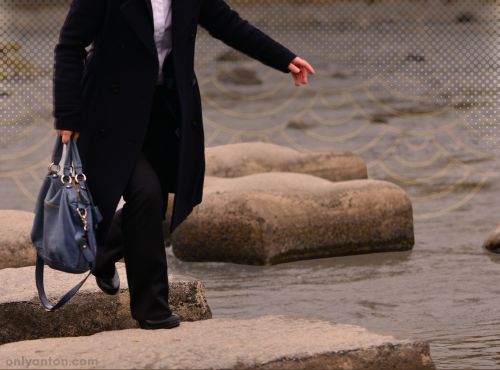
Introduction—Embracing the Path of Suffering
Travel invites us into the unknown, where discomfort and challenges are inevitable. But what if the difficulties we face aren’t barriers but stepping stones to transformation? In Buddhism, suffering (dukkha) is seen as an essential part of the human experience, yet it also offers profound opportunities for growth. By understanding the stories we tell ourselves about suffering, we can reshape our literal and metaphorical journeys and uncover deeper meaning along the way.
This post is Part 5 in the What Buddhism Taught Me About Travel series. It builds on the insights explored in earlier entries: the importance of managing expectations, seeing reality as it is, and letting go of attachments. In this installment, we’ll delve into the nature of suffering, how our perceptions shape it, and how mindfulness and compassion can transform challenges into profound opportunities for self-discovery.
The Nature of Suffering: Dukkha and Its Layers
In Buddhism, the concept of dukkha is fundamental, offering a lens through which to understand life’s challenges. Often translated as “suffering,” dukkha encompasses far more than physical pain or distress. It includes dissatisfaction, unease, and the subtle sense that things are not as they should be—a feeling many travellers recognize when their plans go awry or expectations are unmet.
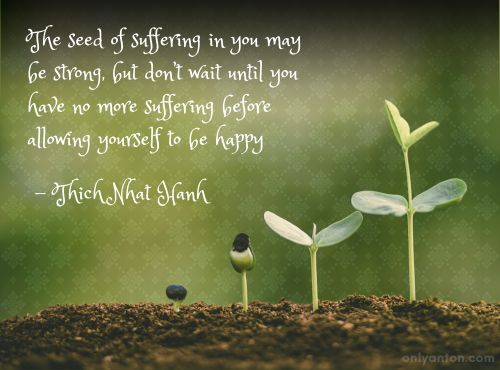
Defining Dukkha
At its core, dukkha reflects the unavoidable truths of existence: impermanence, change, and the gap between reality and our desires. It is not limited to immediate, occurrent suffering—such as the physical discomfort of a long-haul flight or a sprained ankle during a trip. It also includes dispositional suffering, the ever-present potential for unease inherent in life. For example, even during moments of joy, there may be a faint undercurrent of anxiety about how fleeting the moment might be.

Expanding the Concept of Suffering
Travel often brings dukkha to the forefront. Physical discomfort, like cramped airplane seats or long layovers, is an obvious example. Emotional challenges, such as homesickness or the frustration of navigating a new culture, also fall within dukkha’s scope. More deeply, existential discomfort can arise when travellers confront profound differences in worldview or experience culture shock, prompting questions about identity, belonging, and purpose.
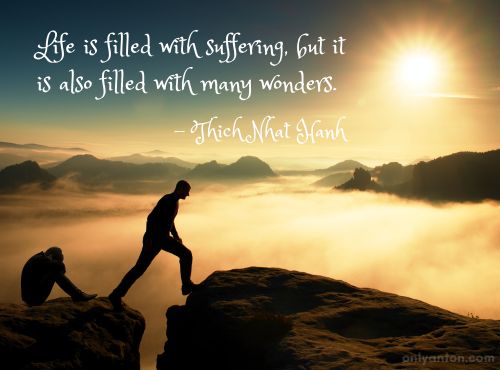
These experiences remind us that dukkha is not a punishment but an integral part of life. Recognizing this can shift our perspective: suffering is not something to avoid but an opportunity to learn.
Dispelling Misconceptions
It’s essential to address a common misunderstanding: Buddhism is not a pessimistic philosophy that sees life solely as suffering. Rather, it provides tools to navigate and transform suffering into growth. As a popular Buddhist saying goes: “Pain is inevitable; suffering is optional.” While pain represents the unavoidable challenges of life, suffering often arises from our resistance to those challenges or the narratives we construct around them. By changing our relationship with dukkha, we can approach life—and travel—with resilience and wisdom.
The Role of Perception—Suffering as a Story We Tell
Suffering often stems less from what happens to us and more from how we interpret those events. Perception acts as a filter, colouring our experiences and influencing our reactions. With its inherent unpredictability, travel provides a fertile ground for examining the stories we tell ourselves about discomfort and difficulty.
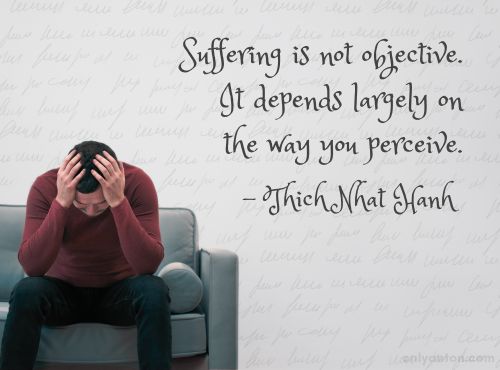
Perception Shapes Experience
Consider the example of a delayed flight. One traveller might view it as a frustrating waste of time, lamenting the disruption to their plans. Another might see it as a chance to relax, read, or engage in quiet reflection—a rare pause in the chaos of travel. The event itself is neutral; our perception determines whether we experience it as suffering or opportunity.

The stories we construct often amplify our discomfort. If we interpret a long train ride as tiresome, we might focus on every ache and inconvenience. But if we reframe it as a chance to watch the landscape unfold, practice mindfulness, or connect with fellow travellers, the experience transforms. In this way, perception shapes our reactions and the quality of our journey.
Introducing Impermanence (Anicca)
Central to Buddhist thought is the concept of anicca—impermanence. Everything we encounter is fleeting, from breathtaking sunsets to the perfect execution of a meticulously planned itinerary. Clinging to an idealized version of how things “should” unfold only deepens our suffering. When a favourite restaurant is unexpectedly closed or the weather doesn’t cooperate, disappointment arises not from the event but from our attachment to a particular outcome.
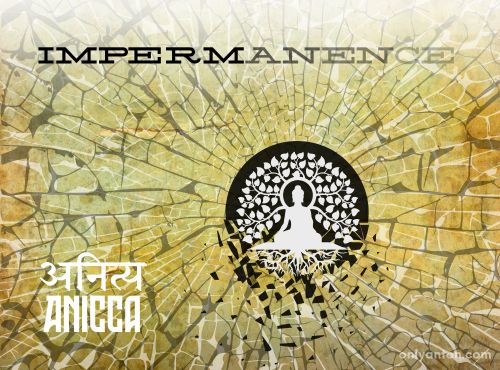
Travel is an exercise in impermanence. Plans change, delays happen, and destinations evolve. Embracing anicca allows us to adapt to these shifts gracefully, finding beauty in the fleeting and unexpected. Recognizing that nothing is permanent helps us navigate the inevitable ups and downs of the journey with greater equanimity.
By changing the stories we tell ourselves and accepting the transient nature of experience, we can take a richer, more resilient approach to travel and life itself.
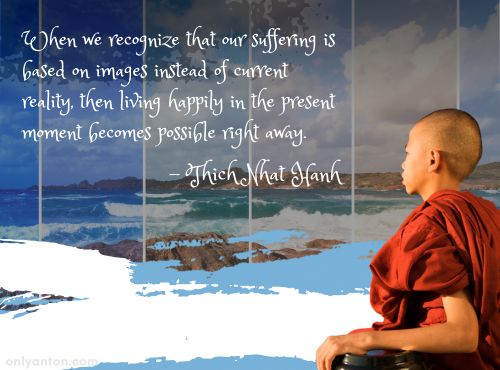
Recognizing Self-Created Stories—The Two Arrows
Buddhism teaches that suffering arises not only from the challenges we encounter but also from the stories we create around those challenges. The parable of the Two Arrows illustrates this distinction, offering a profound insight into how we contribute to our own suffering.
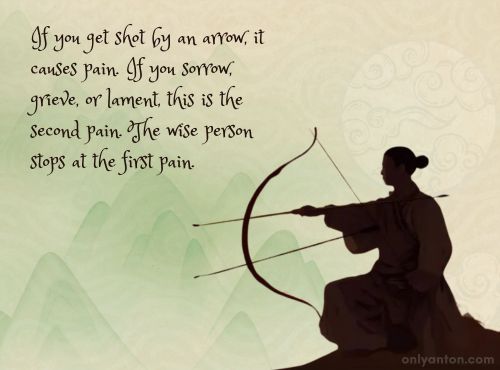
The Two Arrows Parable
Imagine being struck by an arrow—an unavoidable moment of pain. The first arrow represents the inevitable difficulties of life: injury, illness, loss, or disappointment. Now imagine that, instead of addressing the wound, we shoot a second arrow at ourselves by creating mental narratives around the pain: “Why did this happen to me? This always happens. I’m so unlucky.” The second arrow represents self-inflicted suffering caused not by the event but by our response.
In the context of travel, the first arrow might be a lost passport—a frustrating and inconvenient situation. The second arrow emerges when we tell ourselves a story about the event: “I’m so careless. This trip is ruined. Nothing ever goes right for me.” The first arrow is unavoidable, but the second arrow is optional, shaped entirely by our perception and reaction.
Self-Created Narratives
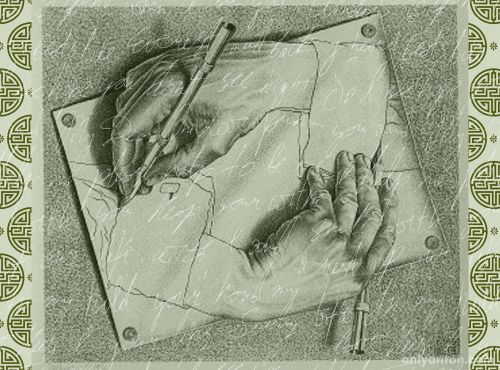
Travel often amplifies the stories we tell ourselves. Common narratives include:
- Perfectionism: Feeling disappointed when a trip doesn’t match the idealized version we envisioned.
- Victimhood: Viewing every mishap as evidence of bad luck or unfair treatment.
- Frustration with Cultural Differences: Struggling to adapt and blaming discomfort on unfamiliar customs or practices.
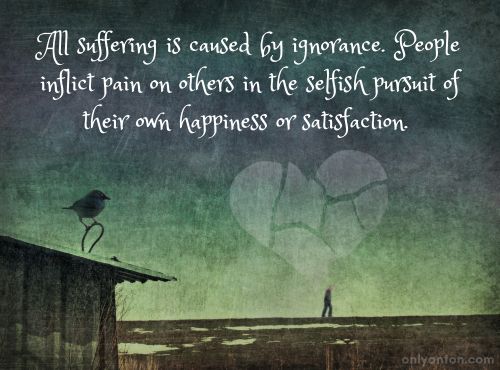
These stories stem from avidya—ignorance or misunderstanding—and the illusion of control. Clinging to the belief that we can dictate every detail of our journey only deepens our dissatisfaction when reality diverges from our expectations.
Practical Insight
To break free from these narratives, pause and ask yourself: “What am I adding to this experience?” Mindfulness can help us identify the second arrow and choose not to fire it. By questioning our stories, we create space for a more compassionate and balanced perspective, transforming suffering into an opportunity for growth and self-awareness.
Cultivating Mindfulness—Observing Without Judgment
Mindfulness is the practice of bringing one’s awareness to the present moment without judgment. It is a powerful tool for navigating suffering, helping us recognize and observe thoughts and emotions without clinging to or pushing them away. For travellers, mindfulness can transform moments of stress into opportunities for deeper awareness and connection.
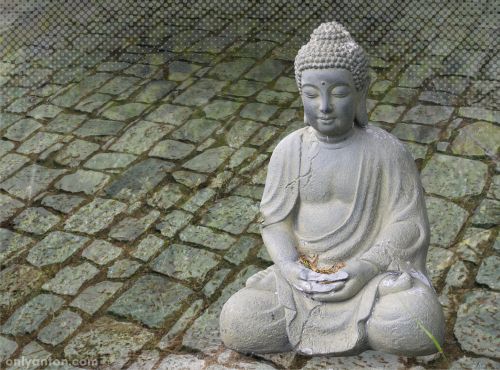
Mindfulness as a Tool
When travel challenges arise—missed connections, language barriers, or cultural misunderstandings—our initial reaction is often frustration or anxiety. Mindfulness provides a way to pause and respond intentionally rather than reacting impulsively. We can break the cycle of overthinking or avoidance by simply noticing our thoughts and emotions as they arise.
Practical mindfulness techniques for travellers include:
- Mindful Breathing: Take slow, deliberate breaths, focusing on the sensation of air entering and leaving your lungs. This practice can calm the mind and anchor you in the present.
- Sensory Grounding: Engage your senses to reconnect with the moment. Notice the texture of a cobblestone street beneath your feet, the aroma of a local dish, or the melody of a foreign language.
- Body Scans: Gently bring your awareness to each part of your body, noticing areas of tension or discomfort without judgment. This exercise can help release physical stress and restore a sense of balance.
Connecting to Impermanence and Interconnectedness
Mindfulness not only grounds us in the present but also reveals the transience of our experiences. Suffering, like joy, is impermanent—by observing it without judgment, we allow it to pass without amplifying it through resistance.
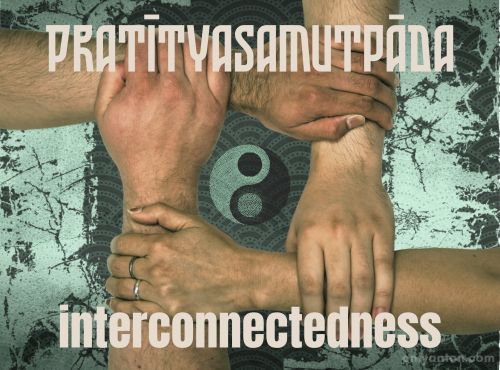
Additionally, mindfulness fosters a sense of interconnectedness. The Buddhist concept of Pratītyasamutpāda (dependent origination) teaches that all phenomena, including suffering, arise due to interconnected causes and conditions. Recognizing this shared reality reminds us that we are not alone in our struggles—our experiences are part of a more extensive web of existence. This understanding dissolves feelings of isolation and deepens our empathy for others, encouraging a more compassionate approach to travel and life. Through mindfulness, travellers can navigate challenges with grace, seeing each moment—pleasant or painful—as part of the ever-changing tapestry of existence.
Practicing Compassionate Inquiry—Curiosity, Kindness, and Self-Compassion
Suffering frequently stems from the stories we tell ourselves about our experiences. Compassionate inquiry invites us to explore these narratives with curiosity and kindness, transforming judgment into understanding. This practice offers a pathway to uncover the roots of suffering and reframe them with greater compassion.
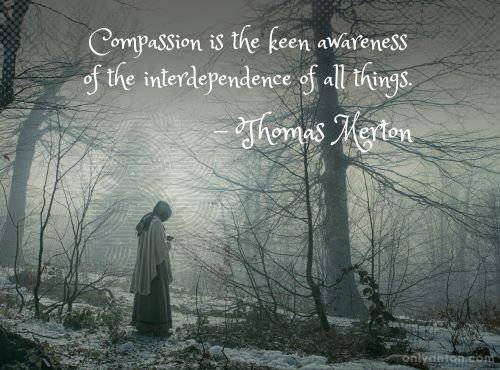
Introducing Compassionate Inquiry
Compassionate inquiry is the gentle art of asking questions that illuminate our inner world without judgment. By approaching our thoughts and feelings with curiosity, we can untangle the narratives that amplify our suffering and begin to reshape them into something more empowering.
Framework for Compassionate Inquiry
- Pause: Take a moment to breathe and create mental space. This pause disrupts automatic reactions and allows reflection to emerge.
- Ask: “What am I feeling right now? What story am I telling myself?” Recognizing the story behind the feeling can offer valuable insight.
- Investigate: “Is this story helpful? Is it true?” Reflect on the Buddhist teaching of Right Speech, which emphasizes truthfulness, kindness, and necessity. The timeless saying, often attributed to Rumi, captures this essence: “Before you speak, let your words pass through three gates: Is it true? Is it necessary? Is it kind?”
- Reframe: Shift to a perspective rooted in kindness and possibility. What might the experience teach you? How can you rewrite the narrative to be more compassionate and constructive?
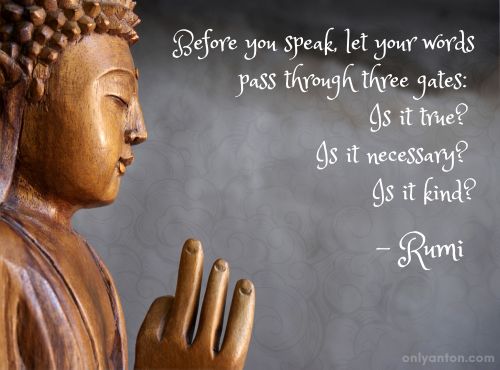
The Role of Self-Compassion
Compassionate inquiry begins with offering kindness to yourself. Mistakes and challenges are part of the human experience, but self-criticism often magnifies suffering. A kind and understanding inner dialogue prevents these additional “arrows” of pain. Remember: imperfection is not failure—it’s a sign of growth.

Practical Tips for Self-Compassion in Travel
- Mantra Practice: Repeat phrases like, “It’s okay to make mistakes,” or, “May I be kind to myself in this moment.”
- Gentle Reflection: Ask, “If a friend were in this situation, how would I respond? Can I extend the same kindness to myself?”
- Focus on Growth: View travel as a journey of discovery rather than a quest for perfection.
A Compassionate Lens for Others
Self-compassion naturally extends outward. By treating ourselves with understanding, we foster greater empathy for others. This perspective encourages patience, humility, and deeper connections, enriching every travel experience.
Reader Reflection
Think back to a recent travel challenge:
- How did you respond to yourself in that moment?
- What could you do differently next time to extend kindness toward yourself?
Compassionate inquiry is a skill that deepens over time. Through curiosity and self-compassion, we can transform suffering into meaningful growth, both on and off the road.
Reframing Perspectives—No Mud, No Lotus
Suffering, though unwelcome, often contains the seeds of growth and transformation. The Buddhist metaphor of the mud and the lotus offers a profound way to reframe our challenges: just as the lotus flower blooms beautifully from muddy waters, so too can wisdom and resilience arise from life’s difficulties.

The Mud and the Lotus
In Buddhist thought, mud symbolizes the struggles and hardships of life, while the lotus represents enlightenment, growth, and clarity. Without the mud, the lotus cannot grow; the very challenges we face give rise to strength and insight. Travel provides fertile ground for such growth, as it often brings moments of discomfort and unpredictability.
Consider typical travel challenges: a language barrier that makes communication difficult may lead to creative problem-solving and shared laughter with locals. Getting lost in a foreign city might initially feel frustrating but can result in the serendipitous discovery of a hidden café or a beautiful, untouristed street. These experiences, though rooted in struggle, enrich our journeys and leave lasting memories.
Interconnectedness and Humility
Another perspective shift comes from recognizing the shared nature of suffering. All beings experience difficulties, whether physical, emotional, or existential. This realization fosters empathy and dissolves the ego-driven narratives that insist, “Why me?” Instead, we begin to see our struggles as part of a universal human condition.

Travel deepens this understanding. Connecting with locals, hearing their stories, and experiencing different ways of life remind us that suffering and joy transcend cultural boundaries. Appreciating these shared experiences nurtures humility, dissolves barriers, and allows us to approach others with greater compassion.
Reframing challenges as opportunities for growth and connection transforms how we experience suffering. The mud of travel—the delays, misunderstandings, and discomforts—is not a hindrance but a necessary foundation for the lotus of discovery, empathy, and personal growth.
Personal Reflections on Suffering and Stories
Travel often teaches us lessons in ways we least expect, and my trip to the Netherlands in the summer of 2023 was no exception. After completing a Dutch language course, I had meticulously planned a journey to practice my skills while visiting artistic landmarks, including the Mondriaan House in Amersfoort, the Frans Hals Museum in Haarlem, and Hieronymus Bosch’s hometown of Den Bosch—a long-anticipated highlight.
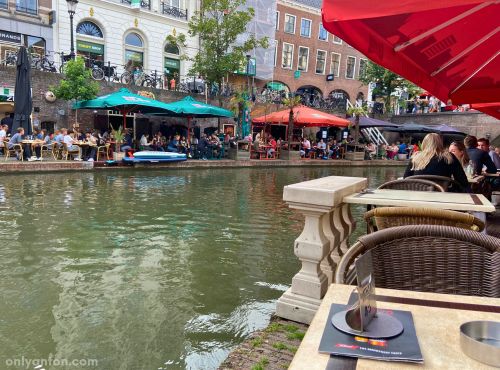
However, while en route to Utrecht, I discovered that the rail line to Den Bosch was closed for repairs. Alternate routes were cumbersome, requiring hours of travel. Frustrated and disheartened, I made the difficult decision to abandon my plans. Instead, I spent the day exploring Utrecht. What began as a disappointment transformed into a day of unexpected serenity. I wandered the canals, admired the historic Dom, and marvelled at the quirky UFO atop the Inktpot building. I dined along the canal that evening at a familiar restaurant, practicing my Dutch with the waiter. Though unforeseen circumstances had disrupted my plans, I discovered joy in being present.
Belgian Detour
The journey took another unexpected turn when a former colleague invited me to Belgium. Seizing the opportunity, I rearranged my itinerary and spent several days reconnecting over Belgian meals, beers, and historic sites. This spontaneous decision became the highlight of my trip—a reminder that letting go of rigid expectations can lead to meaningful and transformative experiences.
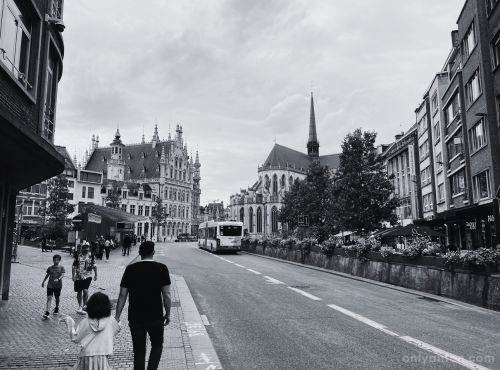
Looking back, I see how clinging to my original plans would have only compounded my frustration. By embracing impermanence and reframing the disruption, I experienced the essence of Buddhist teachings. The closed rail line was the “mud,” but it led to the “lotus” of deeper connection and growth. Similarly, avoiding the “second arrow” of self-created disappointment allowed me to see the detour as an opportunity rather than a setback. These moments reinforced the power of shifting our narratives and welcoming the unexpected.
Conclusion: Embracing Suffering as Part of the Journey
Suffering, while universal, holds the potential to be a profound teacher. It’s not just the events we experience but the stories we tell ourselves about them that shape our perception of the world. By embracing mindfulness and compassion, we can transform moments of discomfort into opportunities for resilience, wisdom, and connection. The Buddhist teachings of impermanence and the “two arrows” remind us that while pain is inevitable, suffering is often optional—a product of the narratives we construct.
As travellers, reframing challenges as stepping stones rather than roadblocks opens the door to more profound, meaningful journeys. By letting go of rigid expectations and cultivating a compassionate lens, we can uncover the beauty within the unexpected twists of the path.
The next post of the What Buddhism Taught Me About Travel series, “Mindfulness and Movement,” explores how staying physically and mentally present enhances our travel experiences and helps us move through the world with greater intention and awareness.
What About You?
Travel challenges are inevitable, but how we respond to them can make all the difference. What story are you telling yourself about your challenges? Is it one of frustration or opportunity? How can you shift your perspective to embrace the mud and bloom like the lotus?
We’d love to hear from you. In the comments below, share your reflections, stories, and strategies for navigating difficulties during your travels. Let’s continue the conversation and inspire one another to approach travel and life with mindfulness and compassion.
Glossary of Terms
These definitions provide a concise, accessible guide to the terms introduced throughout the series:
- Anattā: Non-self, the understanding that there is no fixed, permanent self.
- Anicca: Impermanence, the idea that all things are in constant change.
- Avidyā: Ignorance or misunderstanding, the lack of true knowledge obscuring reality.
- Chanda: Wholesome desire, a positive motivation rooted in ethical intention.
- Dharma: Teachings or truth, often referring to the teachings of the Buddha.
- Dukkha: Suffering or dissatisfaction, central to the Buddhist worldview.
- Karma: The principle of cause and effect through intentional actions.
- Madhyama Pratipada: The Middle Way, avoiding extremes of indulgence and asceticism.
- Metta: Loving-kindness, a practice of cultivating goodwill toward all beings.
- Nirvana: The cessation of suffering and the end of the cycle of rebirth.
- Pratītyasamutpāda: Dependent origination, the Buddhist teaching that all phenomena arise in dependence on interconnected causes and conditions.
- Samma Kammanta: Right action, ethical conduct that avoids harm to others.
- Samma Sankappa: Right intention, the cultivation of thoughts guided by goodwill and wisdom.
- Tanha: Craving or unwholesome desire driven by attachment and ego.
- Upadana: Clinging, attachment that leads to suffering.
- Upaya: Skillful means, using wisdom and compassion to adapt actions effectively.
- Upekkha: Equanimity, a state of balance and calmness amid life’s highs and lows.
- Vossagga: Letting go, releasing attachment to desires, outcomes, and fixed identities.
- Wu Wei: Effortless action, a Taoist concept of flowing naturally with life’s processes.
New terms will be introduced throughout the series as needed, offering deeper insights into the teachings relevant to travel.
Further Reading and Resources
Related Posts on Only Anton
- What Buddhism Taught Me About Travel: This series’s introductory post explores how Buddhist teachings can inspire mindful and transformative travel experiences.
- Managing Expectations in New Places: Part Two of the What Buddhism Taught Me About Travel series. Insights into adjusting expectations to cultivate openness and reduce disappointment while travelling.
- Seeing Reality Where You Are: Part Three of the What Buddhism Taught Me About Travel series. Explore how Buddhist teachings can transform travel by helping you see reality as it is, embrace impermanence, and cultivate mindfulness on the journey.
- The Art of Letting Go While Travelling: Part Four of the What Buddhism Taught Me About Travel series. Learn how letting go can transform your travel experiences through mindfulness, resilience, and meaningful personal connections.
- Mindful Travel: Finding Meaning in Our Journeys: A guide to embracing mindfulness during travel, fostering deeper connections and appreciation.
External Resources
These resources offer practical tools, philosophical insights, and profound perspectives to deepen your understanding of suffering and its transformative potential in both travel and daily life.
Books
- The Art of Happiness, 10th Anniversary Edition by Dalai Lama and Howard Cutler (2009): Explores Buddhist perspectives on finding happiness and navigating challenges, offering insights into how our perceptions shape our reality. Look it up at a local library, browse online, or buy your copy here.
- No Mud, No Lotus: The Art of Transforming Suffering by Thich Nhat Hanh (2014): A profound exploration of how challenges and suffering are essential for growth and transformation. Check your local library, search online, or order a copy here.
- Radical Acceptance: Embracing Your Life With the Heart of a Buddha by Tara Brach (2004): Provides practical tools for mindfulness and self-compassion to navigate life’s difficulties. Borrow from a library, find it online, or get it here.
- When Things Fall Apart: Heart Advice for Difficult Times by Pema Chödrön (2016): A Buddhist guide to facing suffering and challenges with courage, openness, and wisdom. Find it at your library, browse online, or grab your copy here.
- The Book of Joy: Lasting Happiness in a Changing World by Dalai Lama and Desmond Tutu (2016): An inspiring dialogue about joy and resilience in the face of suffering. Look it up at a local library, browse online, or buy your copy here.
- Self-Compassion: The Proven Power of Being Kind to Yourself by Dr. Kristin Neff (2015): A comprehensive guide to the role of self-compassion in resilience and personal growth. See if your library has it, look online, or snag a copy here.
Articles
- “The Four Noble Truths” on Tricycle: The Buddhist Review: A detailed exploration of Buddhism’s foundational teachings on suffering and its transformation. Explore articles on the Buddhist understanding of suffering here.
- “Suffering and Letting Go” by Jack Kornfield (November 2017): Insights into the relationship between suffering and growth and how mindfulness can transform pain into wisdom. Find the article here.
- “Understanding Dukkha” by Mark Van Buren, Tricycle (October 2023): This article explores the First Noble Truth of Buddhism, delving into the meaning of dukkha and its role in cultivating awareness and liberation. Read the article here.
Websites
- Insight Timer: Offers free guided meditations, mindfulness practices, and teachings from Buddhist teachers on letting go and embracing challenges.
- Zen Studies Society: Resources and teachings on Zen Buddhism, including lessons on impermanence, mindfulness, and suffering.
- Plum Village: The official website of Thich Nhat Hanh’s Buddhist community, featuring articles and resources on mindfulness and transformation.
- Self-Compassion, the website of Dr. Kristin Neff: A comprehensive website examining the role of self-compassion in resilience and personal growth.




